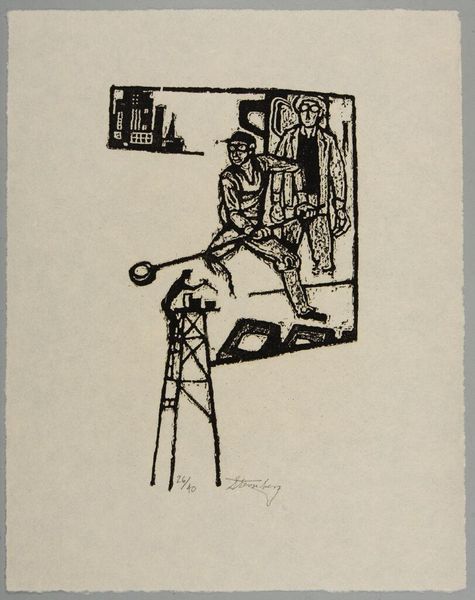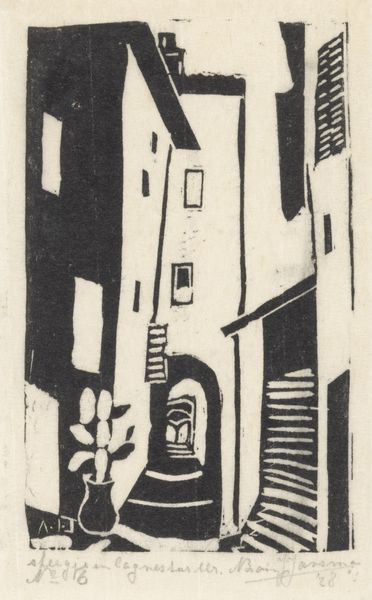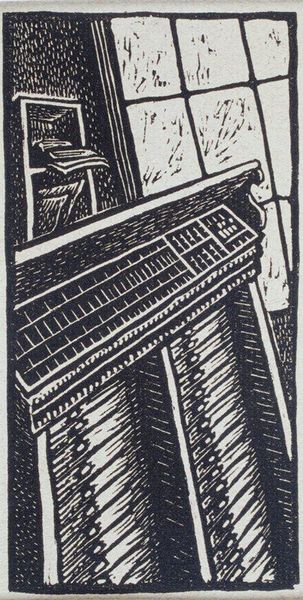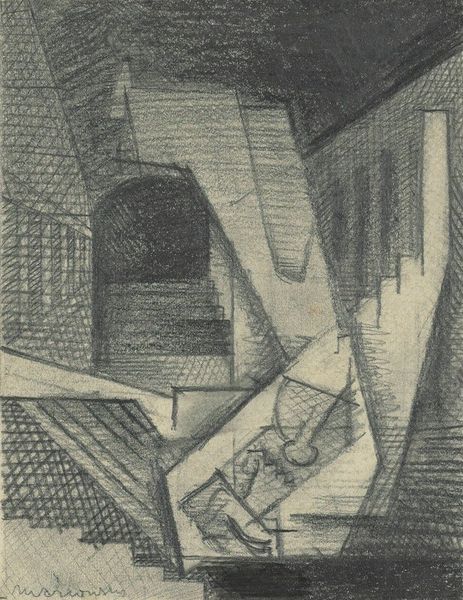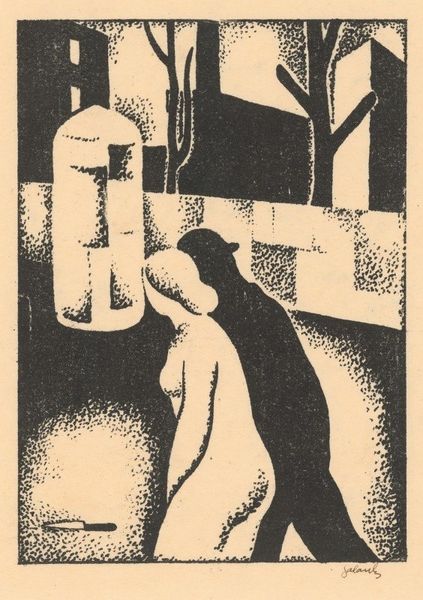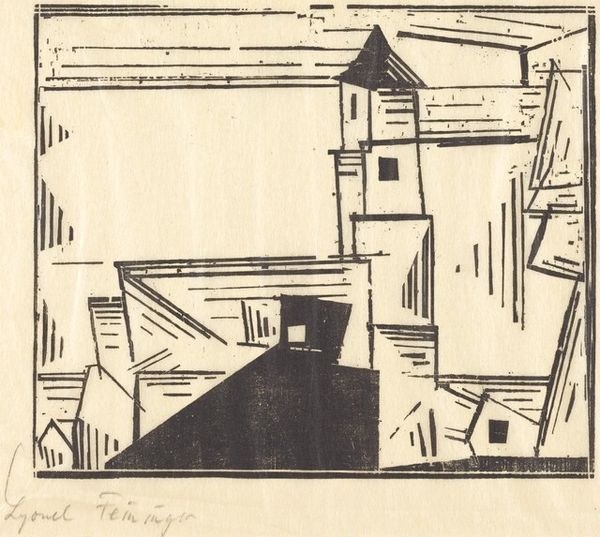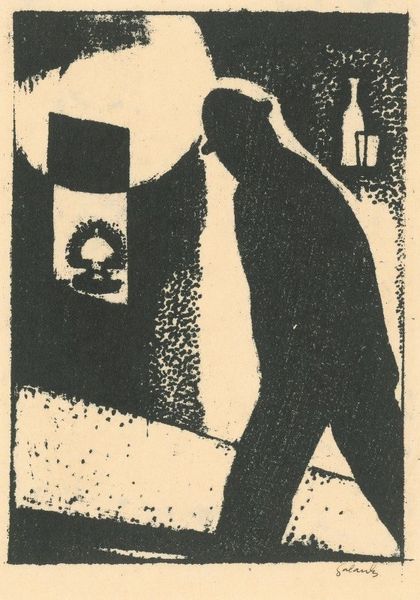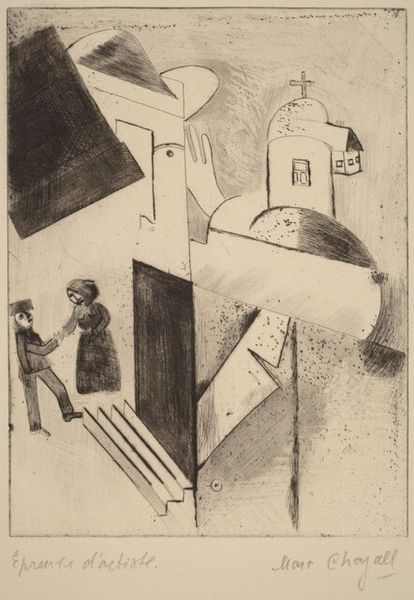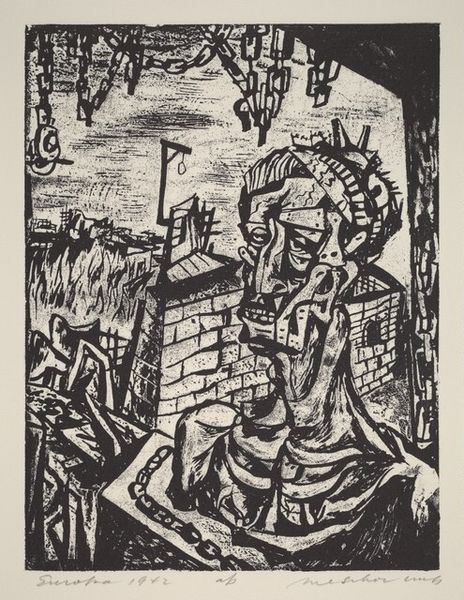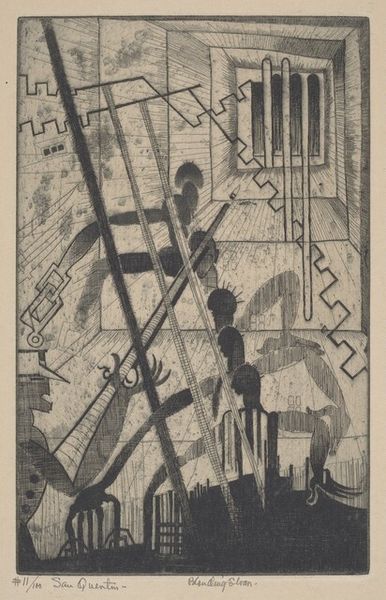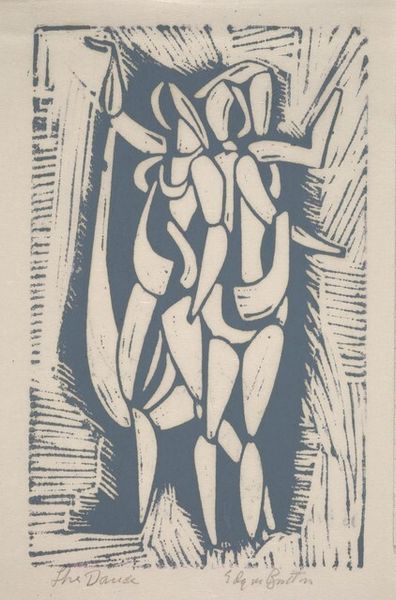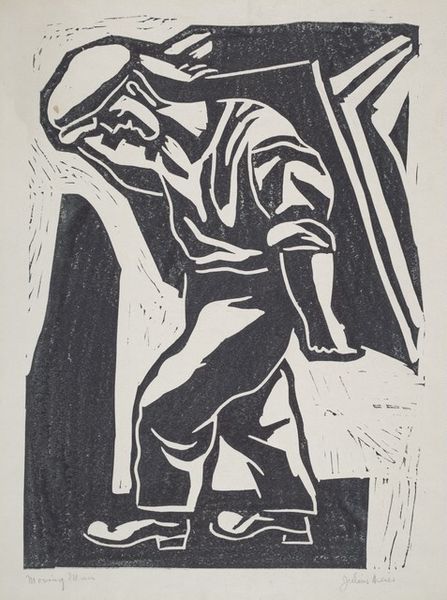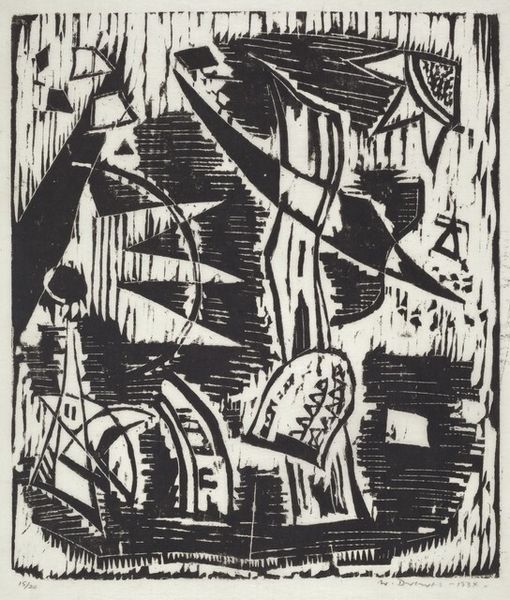
print, woodcut
# print
#
figuration
#
woodcut
#
cityscape
#
realism
#
monochrome
Dimensions: Image: 250 x 120 mm Sheet: 316 x 246 mm
Copyright: National Gallery of Art: CC0 1.0
Editor: This is Joseph Solman’s "Venus of 23rd Street," a woodcut print from around 1936. It’s stark – black and white, very geometric. It gives me a slightly uneasy feeling; the female figures feel very objectified. What do you see in this piece? Curator: It’s a powerful commentary, isn't it? Consider the historical context. Solman created this during the Depression era, a time of immense social upheaval. The “Venus” references classical ideals of beauty, juxtaposed against the gritty reality of 23rd Street. These weren't celebrated, powerful women. What statement might Solman be making about the commodification of women's bodies through advertising? Editor: So, you’re suggesting it’s a critique of how women are presented, or maybe even exploited, in urban environments? Curator: Exactly. The harsh lines of the woodcut emphasize this sense of unease. It’s a critical look at the way capitalist society reduces women to mere objects. Look at the geometric shapes that seem to cage her and segment her body, like meat for display. Do you see other symbols of that society here? Editor: The billboards, the sheer number of them, all competing for attention! I never thought about it this way. I was so caught up in the aesthetic, I missed the socio-political commentary completely. Curator: That’s the beauty of art, isn't it? It invites us to look beyond the surface, to question the narratives being presented to us and who they are meant to serve. Editor: I learned that even stark monochromatic pieces can hold so many layers of meaning. This really highlighted the historical and societal relevance in art. Curator: Indeed. Let us move forward, informed by art, towards building a more just and equitable world.
Comments
No comments
Be the first to comment and join the conversation on the ultimate creative platform.
